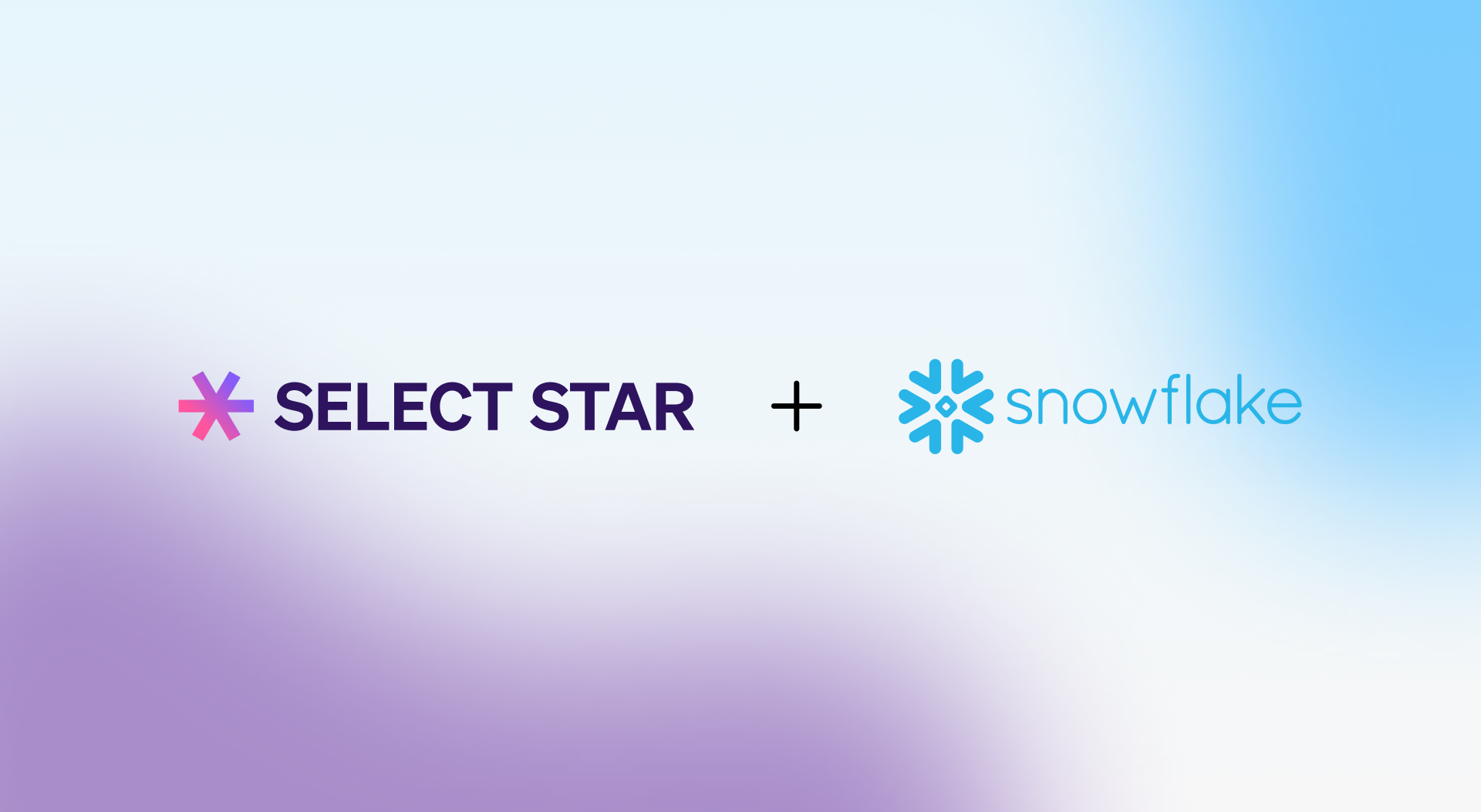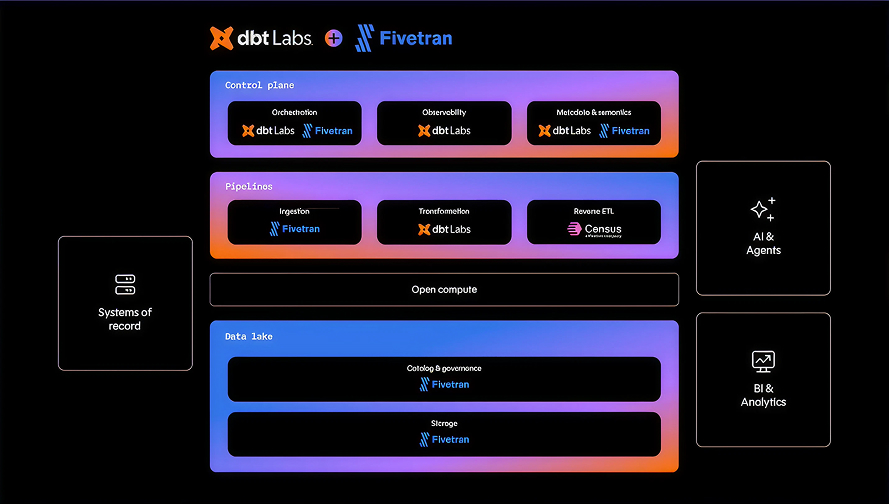If you work with data, you’re probably familiar with the concept of data lineage: tracking where data comes from and how it moves through your systems. Column-level lineage at the column level takes that a step further by showing how each individual field is created, transformed, and used across tables, models, and dashboards.
That level of detail is essential for debugging pipelines, managing schema changes, and making sure business metrics stay accurate as your data environment grows more complex.
In this post, we’ll look at real-world data lineage examples from organizations across industries — including healthcare, construction, financial services, agriculture, and technology. Companies like HDC Hyundai, nib Group, Pennant Services, Bowery Farming, Xometry, AlphaSense, Block, and Faire are using lineage at the column level to:
- Cut data pipeline costs
- Speed up root cause analysis
- Improve data quality and trust
- Streamline compliance and governance
Whether you’re exploring lineage tools or building out a data governance strategy, these stories show what’s possible when you have full visibility into how your data works at the column level.
Why Column-Level Lineage Matters
Column-level lineage shows how each field in your data is created, transformed, and used, from the source all the way to dashboards and reports. It helps teams answer questions like: Where is this metric coming from? What happens if we change this column? Why did this report stop updating?
As data teams scale with tools like Snowflake, dbt, Tableau, and Power BI, it becomes harder to keep track of how data flows and what depends on what. Column-level lineage gives teams the detail they need to troubleshoot issues quickly, reduce the risk of breaking changes, and support reliable, well-governed data.
If you want a deeper dive into data lineage concepts and tools, check out our complete guide. Otherwise, let’s look at how real companies are using column-level lineage in their day-to-day work.
How HDC Hyundai Uses Column-Level Lineage to Prepare AI-Ready Data
HDC Hyundai Development Company is one of Korea’s largest construction and real estate firms. As they modernized their data infrastructure to support advanced analytics and AI initiatives, the team needed greater transparency into how data was structured, transformed, and consumed. Without detailed lineage, it was difficult to ensure that datasets were reliable enough to be used in AI models and business-critical decision-making.
Using column-level data lineage, HDC Hyundai was able to:
- Standardize metadata across their data warehouse and analytics platforms
- Gain end-to-end visibility into how fields are sourced and transformed
- Reduce the risk of inaccuracies flowing into AI and ML models
- Build a stronger foundation for future AI-driven initiatives
By making their data pipelines transparent and reliable, HDC Hyundai has accelerated its journey toward becoming an AI-ready enterprise. Column-level lineage provided the clarity needed to govern data at scale and prepare for next-generation use cases.
How nib Group Improves Data Discovery with Column-Level Data Lineage
nib is a leading health insurer in Australia and New Zealand, supporting more than 1.7 million members. As the business scaled, their data team needed a way to improve visibility into a growing data ecosystem and make trusted insights accessible across the organization. Without a clear understanding of how data flowed through systems, analysts spent too much time searching for the right fields and verifying accuracy instead of driving value.
By applying column-level data lineage, nib was able to:
- Provide business teams with a clear view of how data is sourced and transformed
- Enable faster data discovery and reduce time spent searching for the right columns
- Build trust in dashboards by showing the full context behind metrics
- Support self-service analytics across teams without overloading engineers
With better visibility and confidence in their data, nib empowered employees at every level to make decisions backed by reliable insights. Column-level lineage turned data discovery from a bottleneck into a competitive advantage.
How Pennant Services Simplifies M&A Data Integration with Granular Data Lineage
Pennant Services supports healthcare, hospice, and senior living providers across the United States. During a period of rapid growth through mergers and acquisitions, their data team faced the challenge of integrating new data sources quickly and accurately. Each acquisition brought its own systems and reporting needs, making it difficult to maintain a consistent view of the business.
With column-level data lineage, Pennant Services was able to:
- Trace how data from acquired systems flowed into core reporting
- Unify and standardize metrics across multiple business units
- Troubleshoot inconsistencies during integrations more efficiently
- Build confidence in consolidated reporting for leadership and stakeholders
By bringing transparency to complex M&A data pipelines, Pennant Services accelerated integration efforts and reduced the risk of inaccurate reporting. Column-level lineage gave the team a reliable way to manage growth while ensuring that decision-makers could trust the numbers.
How Bowery Farming Uses Column-Level Lineage to Keep Dashboards Reliable
Bowery Farming is a pioneer in indoor agriculture, supplying more than 1,000 retailers across the Northeast and Mid-Atlantic. Their 11-person data science team manages a warehouse of 900 tables and billions of data points. As the company scaled, they struggled with frequent dashboard outages, limited visibility into dependencies, and an increasing number of support tickets from business users.
With column-level lineage in place, Bowery can now:
- Trace which columns feed into dashboards instantly
- Troubleshoot broken reports in 1-2 minutes instead of 30-60
- Reduce operational disruptions and cut down support tickets
- Deliver trusted data to stakeholders at the right time
By automating lineage, Bowery turned data from a bottleneck into an enabler of growth. As they expand to new facilities, the team has confidence their data infrastructure can scale with the business.
How Xometry Saves Millions Leveraging Detailed Lineage to Improve Accuracy
Xometry is a global connector of manufacturing suppliers and partners. Their operations rely on an AI-based algorithm to calculate runs, prices, and lead times. While powerful, the algorithm created complexity as data moved through multiple systems. Without clear visibility into how data was transformed and validated, Xometry faced outages, delays in decision-making, and costly errors that added up to millions of dollars each month.

Column-level lineage gave Xometry the visibility they needed to:
- Track how data is derived and transformed across different tables
- Pinpoint root causes of issues and reduce outages
- Debug problems 36 times faster, saving more than 200 engineering hours annually
- Proactively manage changes by linking error messages to Confluence documentation
By making their data pipelines more transparent and resilient, Xometry not only reduced losses but also improved the accuracy of customer-facing information, strengthening trust in their platform.
How AlphaSense Uses Column-Level Data Lineage to Streamline Governance
AlphaSense is an AI-powered insights platform that grew quickly, leaving their core data model fragmented and difficult to maintain. With thousands of tables and dashboards in BigQuery, the data team struggled with efficiency, governance, and delivering accurate insights on time.
The detailed visibility into data lineage allowed AlphaSense to:
- Identify which tables supported critical pipelines like revenue reporting
- Complete impact analysis and change management with confidence
- Reduce their total number of tables by 43% and declutter dashboards by 66%
- Save more than 100 hours on a major data governance project
By bringing clarity to their BigQuery environment, AlphaSense empowered business teams with trusted, self-serve access to data while freeing engineers from constant maintenance.
How Block Automates Data Governance at Exabyte Scale with Lineage
Block, a global financial services company, manages billions of data points across dbt, Fivetran, Amazon S3, Snowflake, and Looker. With millions of Snowflake tables and more than 6,600 active users, their decentralized model led to fragmented communication, inconsistent data practices, and challenges securing sensitive information under regulations like GDPR, CCPA, and PCI DSS.

Using column-level lineage, Block was able to:
- Centralize metadata and clarify dependencies across models and dashboards
- Identify and manage risks related to sensitive data, including PII columns
- Automate access control through Bellhop, an internal tool integrated with Select Star’s API
- Deprecate redundant assets across 11,000 dashboards and 25,000 Looks
By making lineage part of their governance workflow, Block reduced manual effort, improved security, and gave teams the visibility needed to operate at exabyte scale with confidence.
How Faire Uses Column-Level Data Lineage to Cut Pipeline Costs by 70%
Faire began as a platform connecting boutique brands with small retailers. Today, they support more than 100,000 brands and over 700,000 retailers worldwide. As their data volume grew, machine learning models and queries became more complex, often leading to cluster halts, downtime, and blocked analytics initiatives. The data team needed a way to redesign their ETL processes and manage a growing core data model more efficiently.

The impact was clear, as Faire was able to:
- Identify underused columns and consolidate joins into core tables
- Reduce core data pipeline costs by 70 percent
- Decrease debugging hours for analytics engineering by 80 percent
- Increase user engagement with data by 20 percent
By applying column-level data lineage with automated popularity rankings, Faire streamlined their data platform and made it easier for business teams to access trusted data while lowering costs at scale.
Column-Level Lineage Changes How Companies Operate
The examples from HDC Hyundai, Faire, Block, nib, Pennant Services, and others show that detailed data lineage is more than a technical feature. It has become a foundation for scale. By tracing data down to the column level, these organizations have streamlined management, reduced costs, improved governance, and built greater trust in their insights.
As data environments continue to grow in size and complexity, column-level visibility ensures that companies can adapt quickly and maintain a competitive edge. It is not just a tool for data teams but a strategic asset that empowers the entire business to make better decisions with confidence.
Ready to see what column-level lineage can do for your organization? Book a demo with Select Star and explore how we can help.









